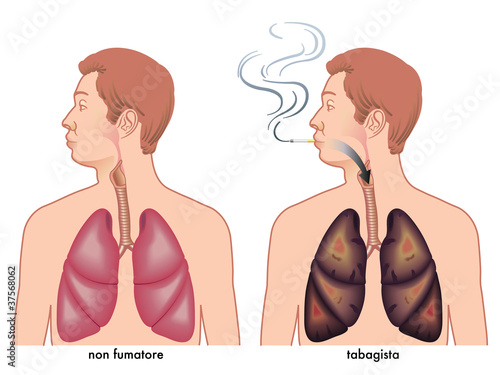| Topic: The poor, black, young and stupid. inside big tobacco | |
|---|---|
|
"The poor, the young, the black and the stupid": Inside Big Tobacco's plans to kill a billion people And what some of today's tech giants have learned from them “The world’s most widespread, serious infection is purposely spread by its vector: the tobacco industry. Rather than a tiny insect, this vector has economic resources rivaling those of many of the world’s largest governments. Its spread is mapped out in mahogany-lined boardrooms; it breeds its resistance to countermeasures in political backrooms; and it seizes its victims in adolescent bedrooms.” —Eric LeGresley, World Health Organization The Legacy Tobacco Documents Library (LTDL) at the University of California, San Francisco is a digital House of Corporate Horrors; an open black box offering the public access to nearly 15 million searchable documents -- over 88 million pages in total -- direct from the private vaults of the Big Tobacco companies. These documents offer an unvarnished view into the deadliest and most outrageous business conspiracy in history. Tens of millions of people dead, for tens of billions in Big Tobacco profits. Most of those deaths were easily preventable and might actually have been prevented but for this conspiracy. It’d be hard to believe if it weren’t all there in black and white: Secret programs to spike and freebase cigarettes in order to hook smokers for life, massive marketing campaigns aimed at hooking underage smokers and at confusing and tricking the public, and untold billions more spent bribing the media, science, academics, and politicians in order to keep the tobacco profits rolling on. You also find the names of all sorts of respectable journalists, political figures and nonprofit charities who cut secret deals with Big Tobacco to help them continue profiting off mass-death. The newest 3.0 version of the digital Tobacco Library has just gone live, the most advanced version yet of its online collection—and the most important collection of leaked secrets anywhere in the world. There are a lot of things I like about the Tobacco Library story—it’s one of those rare stories in which good really does triumph over evil, in which the work of heroes will save the lives of literally tens of millions of people, and for me it’s a rare story in which I get to talk up the good that tech can do. It’s thanks to technology that tens of millions of these company documents are open to researchers and journalists—a raw look into the bowels of corruption. These documents have helped shaped anti-smoking laws around the world and saved countless people from a painful, drawn-out death in the process. Before getting into the tech side of this story, it’s important to understand the stakes in the tobacco conspiracy: Every year, cigarettes still kill roughly 480,000 Americans. Worldwide, tobacco kills six million people per year. In all, tobacco killed over 100 million people in the 20th century, and cigarettes are expected to kill 1 billion people worldwide this century. There is nothing to compare to that death toll in all of human history, not even guns or nukes or the deadliest wars. Whereas tobacco brings nothing but misery for profit, at least you can say that some wars have achieved a greater good—defeating fascism, liberating oppressed groups. The one persistent argument made in tobacco’s defense -- an argument heavily funded and promoted by Big Tobacco -- is the false idea that those millions killed by smoking did so by their own “choice.” Leaving aside the billions spent by Big Tobacco over the years to distort and conceal the medical science on tobacco, there are a few problems with that rationale, many of them helpfully revealed by the LTDL documents. Murder, They Wrote In America, 50,000 people die a year from second-hand smoke; worldwide over 500,000 people die a year from second-hand smoke, which obviously wasn’t their choice. Many of those who develop second-hand smoke diseases were exposed as infants or children, or in their workplaces; Tobacco documents reveal that the companies focused their efforts on getting “presmokers” under the age of 18 addicted, because “presmokers” are far more likely to become addicted for life to nicotine than people who start smoking later in life. Tobacco documents reveal that this target demographic is called “learners,” “replacement smokers,” “starters,” and “tomorrow’s cigarette business”; American Tobacco’s undercover operative proposed publishing articles to discredit an anti-tobacco scientist in a newspaper that no one would trace to the tobacco industry. Up to 90 percent of smokers are addicted, meaning they have no choice. By comparison, only 3 percent of those who drink alcohol are addicted. 81 percent of smokers say they regret having started smoking and cannot quit. Most addicted smokers started smoking between the ages of 13 and 15. Philip Morris conducted secret pharmacological studies about children and smoking in reports titled “Aggressive Monkeys” and “Hyperkinetic Child as Prospective Smoker”; Tobacco companies spike cigarettes with ammonia to create “crack nicotine” in order to maximize addiction; Tobacco companies also targeted disadvantaged communities, including African-Americans and other minorities, and the mentally ill, because they too were more vulnerable to becoming lifelong cigarette addicts. RJR Reynolds once ran a marketing campaign for Camel cigarettes in San Francisco code-named “Project Scum” targeting the homeless, alcoholics, and drug addicts; By the 1970s, tobacco companies started heavily targeting lower-income groups. A 1978 Philip Morris marketing memo argued for pouring more money into sponsoring NASCAR races over sponsoring the arts: “The most important problem I see with sponsorship of the arts is that it reaches the wrong target group. In the main the arts are more of interest to the A/B class than to the lower social classes C and D. Smoking is becoming more and more a C/D class habit... sport sponsorship fits the class and mass exposure criteria much better, and therefore sells more cigarettes per $ spent”; A Lorillard Tobacco Company memo from 1978 reads, "we must continually keep in mind that Newport is being heavily supported by blacks and the under 18 smokers". In the late 50s, Lorillard pushed menthols on African-Americans by driving trucks full of Newports into urban housing projects and distributing them to blacks for free “like ice-cream trucks.” Other code words for targeting minority communities with tobacco included “BHM” (Black + Hispanic market); A 1970 Lorillard memo titled “Why Menthols?” explains how menthol cigarettes were marketed to exploit racist myths for profit: Negroes, as the story goes, are said to be possessed by an almost genetic body odor. Now whether or not this is real is irrelevant. More importantly, Negroes recognize the existence of this “myth.” And they realize that “Whitey” does too. Now what does this have to do with menthol cigarettes? Here’s the theory: Negroes Americans smoke menthols to make their breath feel fresh. To mask this real/mythical odor. Let’s examine this theory a little... Jews, according to an RJR memo, “tend to gravitate towards lower tar brands”; while a 1973 Lorillard memo divided female smokers into eight segments on a sliding scale, from “Emotional Bra-Burning Extremists” and “Blatant Lesbians” to “traditional Women” and “Anti-Libbers.” A 1978 Lorillard memo to the company president about its best-selling brand, Newport, reads: The success of NEWPORT has been fantastic during the past few years. Our profile taken locally shows this brand being purchased by black people (all ages), young adults (usually college age), but the base of our business is the high school student. Lorillard’s biggest worry was the possibility that these fickle youngsters might quit, despite being the most prone to becoming addicts until death: “I think we must continually keep in mind that Newport is being heavily supported by blacks and the under 18 smokers. We are on somewhat thin ice should either of these two groups decide to shift their smoking habits.” Reynolds, maker of Marlboros and Camel, made explicit in their memos the need to hook young teens. A 1975 Reynolds memo, stamped “SECRET,” concluded, To ensure increased and longerterm growth for Camel Filter, the brand must increase its share penetration among the 14-24 age group which have a new set of more liberal values which represent tomorrow’s cigarette business. These are not accidents, as the tobacco library reveals, but rather carefully plotted designs by some of the most profitable corporations in history. It is a profit model that is like a dream come true for the most bloodless capitalists. Warren Buffett, the second richest man in the world and darling to some of the more gullible liberals, explained why he purchased a large 5 percent stake in RJR Reynolds and took a board seat at the tobacco giant: I’ll tell you why I like the cigarette business. It costs a penny to make. Sell it for a dollar. It’s addictive. New York Times columnist Bob Herbert in 1993 thrashed some of the leading African-American charities that took Philip Morris’ blood money to help launder the tobacco giant’s reputation—NAACP, the Urban League, and the United Negro College Fund were among those he named. (More recently, the United Negro College Fund sparked controversy when it took $25 million from the Koch brothers, longtime allies of Big Tobacco and leading funders of climate change deniers). Herbert quoted the once-ubiquitous Winston Man from the magazine ads, David Goerlitz, who recounted what a Reynolds executive told him during a photo shoot: Goerlitz asked the executive during a break if he or his Reynolds colleagues smoked, to which the Reynolds exec shook his head, and replied, Are you kidding? We reserve that right for the poor, the young, the black and the stupid. The Big Reveal And so it continues, for document after millions of documents -- all available thanks to the efforts of tobacco whistleblowers who leaked them, attorneys general who fought to bring the tobacco companies to account, and indefatigable scientist-crusaders against Big Tobacco like UCSF’s Stanton Glantz, who famously summed up what we’re dealing with: The tobacco companies are like cockroaches: they spread disease and don’t like light. And all of their secret internal memos are searchable online thanks to a technology developed and perfected in Russia: optical character recognition (OCR). Before there was WikiLeaks or any other site for leaked and dumped secrets, there was nothing to compare to the Legacy Tobacco Documents Library. The collection began in the early 1990s when tobacco company insiders started leaking secret documents to journalists and scientists showing that the cigarette company executives were lying about what they knew, and more shockingly, that they were intentionally spiking their cigarettes with ammonium, nicotine and other substances -- including polonium-210, the poison used to kill Russian defector Alexander Litvinenko -- to make them more addictive and marketing them to vulnerable sections of the population knowing it would eventually kill them. Cigarette companies have even calculated the worth of an American smoker—$10,000. That’s based on making one penny per cigarette smoked, and the amount of cigarettes the average addicted smoker smokes before dying. One of the two main whistleblowers from the early 1990s, Merrell Williams, died in late 2013; the other key tobacco whistleblower, Jeffrey Wigand, named “60 Minutes’ Most Famous Whistleblower” by the news show, had his harrowing story turned into the movie The Insider starring Russell Crowe and Al Pacino. It was a film about the dangers of blowing the whistle on a powerful and deadly private government -- the tobacco industry -- with more resources than many large nations have. The movie was also about how the tobacco companies and their lawyers helped to kneecap and bring to heel investigative TV journalism in the late 1990s, neutering broadcast journalism just in time for the Bush Administration’s wars in Iraq, and for the bankers to destroy the global economy. RJR Reynolds once ran a marketing campaign for Camel cigarettes in San Francisco code-named “Project Scum” targeting the homeless, alcoholics, and drug addicts. But all is not totally lost. The 1998 Master Settlement forced the tobacco companies to turn over millions of secret documents—among the many provisions of that settlement is the continued funding of the UCSF online Legacy Tobacco Documents Library and the ongoing supply of private company memos and documents, which at last count had reached over 88 million pages. Perhaps at least as important was the 2006 RICO racketeering judgment against the tobacco firms, which found the companies guilty of running a global criminal enterprise. RICO is the law designed and used to take down the Mafia and criminal underworld gangs — and as of 2006, the tobacco companies as well. As part of that settlement, more documents have been forced out of the company vaults, scanned, and put online. And they’ll be kept available to the public until at least 2021 if not longer. Thanks to recent advances in OCR technology, the 88 million-plus pages are all now scanned, indexed and searchable, making the UCSF library the largest collection of business documents in the world and a treasure trove for researchers and journalists who dare to peek into the raw, unvarnished black box of Big Tobacco and corporate blood money. The archive runs on OCR software developed by ABBYY, a Russian software company that’s been a leader in optical character recognition tech for the past couple of decades. ABBYY was founded in Moscow in 1989 at the height of perestroika by a Chinese-Armenian physics grad student at Moscow State University named David Yang. Today, ABBYY has offices around the world, including an office in Milpitas. Its headquarters remain in Moscow. The combination of jaw-dropping, horrific material and ABBYY’s OCR technology allowed Stanford University history professor Robert Proctor to write the first-ever history book — on the tobacco conspiracy to profit off mass-murder and cover it up by corrupting institutions — that relies almost entirely on optical character recognition technology. Proctor’s book is called Golden Holocaust: Origins of the Cigarette Catastrophe and the Case for Abolition, and it stands as the most infuriating, illuminating, and thorough tour inside the Big Tobacco black box. In his introduction to “Golden Holocaust” Proctor writes: the book represents a new kind of historiography: history based on optical character recognition, allowing a rapid ‘combing’ of the archives for historical gems (and fleas). . . . The Internet posting of documents in this form presents us with research opportunities that are largely unprobed. The advantage is largely one of speed, but it also means that entirely new kinds of topics can now be investigated—the history of single words or turns of phrase, for example. It is hard to say how this will transform historical writing, but we are likely to find new paths opening up that we have not even imagined. At 772 pages, “Golden Holocaust” is a massive, devastating indictment of the tobacco industry’s deadly conspiracy and one of the most sickening and infuriating books I’ve ever read—I doubt Marx ever imagined capitalism this nightmarish. We learn about the tobacco companies cartelizing in secret in 1953 at the Plaza Hotel in Manhattan, a meeting in which the heads of the top tobacco firms acknowledged between each other that they knew cigarettes cause cancer and kill, and that they had to work together to suppress and cover this up in order to keep the profits rolling in. All industry propaganda campaigns and efforts emanate out from this initial mob-style meeting of the heads of American Tobacco, RJ Reynolds, Brown & Williamson, Philip Morris, Lorillard and the other tobacco industry capos. As Proctor told me in an email exchange last summer, searchable access to the secret tobacco company documents “open a window onto a world of unparalleled corruption.” They also do something else: Provide a warning from recent history of what giant corporations are capable of when billions of dollars are at stake. Many of the strategies developed by Big Tobacco to fight government, science, and citizens have become the blueprints for strategies used today by everyone from energy companies fighting climate change science to the Tea Party organizers. And, yes, even the technology industry. “Nobody Would Know It Was Us” One of the most notorious memos uncovered in the tobacco documents—on using doubt as a strategy—is as relevant today as it was in 1969 when it was first written. Today, doubt is the main weapon used by fossil fuel companies—the “Merchants of Doubt”— to combat climate change science and journalism. The memo came from a Brown & Williamson VP of marketing, John W. Burgard, and was addressed to the man who would become president and CEO of Brown & Williamson, C. I. McCarty. The memo states: Doubt is our product since it is the best means of competing with the body of fact that exists in the mind of the general public. It is also the means of establishing that there is a controversy. Big Tobacco also invented some unusual strategies to smear the work of science that had, by the early-mid 1950s, already come to the conclusion that cigarettes were a major cause of lung cancer and other terminal diseases. To destroy the work of one of the leading scientists on cigarette cancer, in late 1953, American Tobacco secretly hired an expert on Pennsylvania land snails named Stanley Truman Brooks to slime or discredit the damning research by a scientist named Ernest Wynder, whose papers proved cigarettes caused cancer once and for all, beyond any doubt. Brooks, the snail expert, traveled to Washington DC and Bethesda on American Tobacco’s coin, met with Wynder’s co-author of the study on how skin-painting mice with cigarette tar produced tumors, and, by December of 1953, felt confident enough to report to his American Tobacco handler, We have enough material to befuddle the Wynder combination . . . the remaining job is to disarm and discredit the foe. Looking for any sort of “evidence of fudging” that he could concoct, the snail expert proposed ingratiating himself into the unsuspecting scientists’ lab “as an interested zoologist” in order to report on something that could create plausible doubt. The snail expert, Brooks, then proposed using his media contacts to smear the scientist’s work in the media, but to do so without leaving a trail back to the tobacco industry: The public is not interested in scientific reasoning. Therefore, the newspaper is the most important channel. What we need is a person like Ray Sprigle, Pulitzer Prize winner, who is on the [Pittsburgh] Post Gazette . . . He would be a good one for the exposé. If that strategy -- spying and smearing with the help of undercover investigators and friendly journalists -- sounds familiar then, well, you’ve obviously been paying attention to Pando. In the documents you’ll see a chilling template for exactly the kind of campaign Uber executive Emil Michael’s proposed to wage against Pando editor-in-chief Sarah Lacy last year after she wrote critically about the company. Compare those memos outlining a policy for monitoring and smearing scientists with the help of a Pulitzer winning journalist with the outline of Uber’s proposed smear campaign, as reported by Buzzfeed: Over dinner, [Michael] outlined the notion of spending 'a million dollars' to hire four top opposition researchers and four journalists. That team could, he said, help Uber fight back against the press — they’d look into 'your personal lives, your families,' and give the media a taste of its own medicine…. At the Waverly Inn dinner, it was suggested that a plan like the one Michael floated could become a problem for Uber. Michael responded: 'Nobody would know it was us.' It’s not difficult to imagine a tobacco executive saying the same thing -- “nobody would know it was us” -- about their own smear tactics just a few decades ago. Not least because that's exactly what American Tobacco’s undercover operative proposed by publishing the articles to discredit the anti-tobacco scientist in a newspaper that no one would trace to the tobacco industry or its Wall Street investors. Explaining why he wanted to publish his smears in the Pittsburgh Post-Gazette, Brooks, the snail expert, explained back in 1953: [it] would be a very good (psychologically and strategically) primary vehicle. It is an AM paper so any exposé would go directly on the wire to all other papers and hit the street the same day throughout the USA. The ‘man on the street’ could not connect it with the Wall Street group—that is important. It is a Bloch [owned] paper and I have many friends there—including the Bloch brothers, Springle, etc. If I could produce the evidence, Sprigle could certainly put it across—he is also a heavy smoker! Brooks also offered to place “magazine attacks” against the anti-tobacco science and explained how he would disguise the source: It could go out for use by some known magazine writers or be published under a pseudonym. Name writers would be necessary for the top flight magazines—as we discussed. But are the slicks the place we want to hit?... I wouldn’t lend my name (my real name) to an article in these but a lot of MDs do. These pulps pick up their stuff any place they can find it and perhaps they would take our propaganda (and that is a good word as its source indicates) if fed to them. I could send the columns under my name and perhaps articles under a pseudonym. It took us half a century to learn the extent of the Big Tobacco industry’s conspiracies to control the media, politics and regulation of their products, against all that is in the public interest. And although it eventually saw the light of day, the investors and executives who profited off Big Tobacco went decades without suffering any consequences. Like some tech companies today, the tobacco companies might also have been buoyed knowing that most of their customers would find it impossible to imagine that the multi billion dollar corporation whose product they use every day would be capable of sinking to such depths to protect their bottom line. And even if the documents ever saw the light of day… well, what are those millions of people going to do? Quit? ... For more, read Robert Proctor’s excellent and harrowing book “Golden Holocaust: Origins of the Cigarette Catastrophe and the Case for Abolition” and read Stan Glantz’s blog as he examines everything from the e-cigarette racket to the latest shockers in the tobacco files. |
|
|
|
|
|
I just read the lil warning on the side of the package and decided not to smoke.....
|
|
|
|
|
|
I just read the lil warning on the side of the package and decided not to smoke..... glad i quit. smoked roughly a pack a day for about 12 years. yea that lil warning is kind of a turn off. didnt really give a crap when i was younger though. |
|
|
|
|
|
Edited by
2OLD2MESSAROUND
on
Wed 07/01/15 09:56 AM
|
|
|
RebelArcher stated >>>
I just read the lil warning on the side of the package and decided not to smoke... Tomato replied >>>
glad i quit. smoked roughly a pack a day for about 12 years. yea that lil warning is kind of a turn off. didnt really give a crap when i was younger though. Listening to my father coughing his lungs up from his Emphysema 
and with his strong addiction - we all {6 siblings} were constantly exposed to that 2nd hand smoke {sans any filter} and it was horrible! Getting shut up in our station wagon for any length {road trips} of time - there'd be a couple of us very 
I only tried a couple of 'Mary Janes' &/or 'BONG' a couple of times in my life --- never wanted to - nor desired to make smoking a HABIT. And now I see those Veterans and aging elderly so hooked on that bad health habit and their limited income is eat'n up by the high cost to purchase them! Cheap pack of cigarettes = $3.95 
|
|
|
|
|
|
RebelArcher stated >>>
I just read the lil warning on the side of the package and decided not to smoke... Tomato replied >>>
glad i quit. smoked roughly a pack a day for about 12 years. yea that lil warning is kind of a turn off. didnt really give a crap when i was younger though. Listening to my father coughing his lungs up from his Emphysema 
and with his strong addiction - we all {6 siblings} were constantly exposed to that 2nd hand smoke {sans any filter} and it was horrible! Getting shut up in our station wagon for any length {road trips} of time - there'd be a couple of us very 
I only tried a couple of 'Mary Janes' &/or 'BONG' a couple of times in my life --- never wanted to - nor desired to make smoking a HABIT. And now I see those Veterans and aging elderly so hooked on that bad health habit and their limited income is eat'n up by the high cost to purchase them! Cheap pack of cigarettes = $3.95 
yea its bad. whats even worse is that tobacco companies knew damn well the whole time cigarettes would kill people, and they knowingly sold them sacrificing peoples lives for a profit. |
|
|
|
|
|
Edited by
2OLD2MESSAROUND
on
Wed 07/01/15 10:34 AM
|
|
|
Tomato posted >>>
yea its bad. whats even worse is that tobacco companies knew damn well the whole time cigarettes would kill people, and they knowingly sold them sacrificing peoples lives for a profit. Oh - hell yes; when these congressional hearings were going on --- it was during the time that CNN first started they 24/7 news coverage and most of those congressional hearings were televised! So we got to hear the lies/BS/perfectly worded diatribes that were being spewed up in WDC --- one after one - each Dr. - lung specialist sat there in front of those microphones and 'swore to tell the truth so help me God' and LIED THEIR EYE TEETH OUT! Testimony of the 7 CEOs of Big Tobacco One of the most famous events depicted in the motion picture "The Insider" was the videotaped testimony of the "7 Dwarves" (as they were described by Dr. Wigand) -- the 7 CEOs of Big Tobacco. Their "nicotine is not addictive" testimony, part of the Waxman Hearings, is detailed below. From 1980 to 1994, Rep. Waxman served as Chairman of the House Subcommittee on Health and the Environment. To help focus public attention on the dangers of tobacco, Rep. Waxman invited movie stars and celebrities to appear before his committee. These hearings contributed to the vast change in public opinion about smoking. Other hearings by the Waxman subcommittee exposed the secret activities of the tobacco industry, both through the testimony of industry insiders and internal tobacco company documents. The Waxman Hearings April 14, 1994 House of Representatives Committee on Energy and Commerce Subcommittee on Health and the Environment Hearing on the Regulation of Tobacco Products http://www.jeffreywigand.com/7ceos.php This was during my husbands onset of his cancer: started out as what we assumed was a tooth abscess - then they found cancer in his jaw bone {he was addicted to chewing tobacco from a very young age - 12yrs old} --- he suffered for the next 4 yrs when it went into remission for 2 yrs and then came roaring back to eventually end his life! I'll spare you the graphic details but his jawbone/throat/tongue were gone before they thought they'd removed all the cancer and it came back in other regions! We sat there mesmerized by these hearings and the vile BS that was being spewed by BIG TOBACCO and their paid lackeys and sock puppet medical professionals --- they may all rot in the worst life form possible! IMHO |
|
|
|
|
|
Edited by
RebelArcher
on
Wed 07/01/15 10:45 AM
|
|
|
Listening to my father coughing his lungs up
Same here....except my dad's didnt show up until after he quit smoking after his first of 4 heart attacks.
from his Emphysema I can remember house interior walls....white, except for the upper 1/3 which was stained an off yellow color. Luckily he did quit though....and probably added several years to his life. I guess I had a lil more deterent to smoking besides a warning label 
....and the warning label on my bourbon bottle doesnt help me any either lol. All in all though, Im a grown man and accept any responsibility for any health issues arising from my one.....ok ok maybe 2 lol.....toddies in the evening. |
|
|
|
|
|
Tomato posted >>>
yea its bad. whats even worse is that tobacco companies knew damn well the whole time cigarettes would kill people, and they knowingly sold them sacrificing peoples lives for a profit. Oh - hell yes; when these congressional hearings were going on --- it was during the time that CNN first started they 24/7 news coverage and most of those congressional hearings were televised! So we got to hear the lies/BS/perfectly worded diatribes that were being spewed up in WDC --- one after one - each Dr. - lung specialist sat there in front of those microphones and 'swore to tell the truth so help me God' and LIED THEIR EYE TEETH OUT! Testimony of the 7 CEOs of Big Tobacco One of the most famous events depicted in the motion picture "The Insider" was the videotaped testimony of the "7 Dwarves" (as they were described by Dr. Wigand) -- the 7 CEOs of Big Tobacco. Their "nicotine is not addictive" testimony, part of the Waxman Hearings, is detailed below. From 1980 to 1994, Rep. Waxman served as Chairman of the House Subcommittee on Health and the Environment. To help focus public attention on the dangers of tobacco, Rep. Waxman invited movie stars and celebrities to appear before his committee. These hearings contributed to the vast change in public opinion about smoking. Other hearings by the Waxman subcommittee exposed the secret activities of the tobacco industry, both through the testimony of industry insiders and internal tobacco company documents. The Waxman Hearings April 14, 1994 House of Representatives Committee on Energy and Commerce Subcommittee on Health and the Environment Hearing on the Regulation of Tobacco Products http://www.jeffreywigand.com/7ceos.php This was during my husbands onset of his cancer: started out as what we assumed was a tooth abscess - then they found cancer in his jaw bone {he was addicted to chewing tobacco from a very young age - 12yrs old} --- he suffered for the next 4 yrs when it went into remission for 2 yrs and then came roaring back to eventually end his life! I'll spare you the graphic details but his jawbone/throat/tongue were gone before they thought they'd removed all the cancer and it came back in other regions! We sat there mesmerized by these hearings and the vile BS that was being spewed by BIG TOBACCO and their paid lackeys and sock puppet medical professionals --- they may all rot in the worst life form possible! IMHO i hear ya, i lost my dad to cancer when i was 25. he was a 2 pack a day smoker up until the day he died. he would always say "we didnt know it was bad for us when we started" but after he started he was just unable to quit. |
|
|
|
|
|
Listening to my father coughing his lungs up
Same here....except my dad's didnt show up until after he quit smoking after his first of 4 heart attacks.
from his Emphysema I can remember house interior walls....white, except for the upper 1/3 which was stained an off yellow color. Luckily he did quit though....and probably added several years to his life. I guess I had a lil more deterent to smoking besides a warning label 
....and the warning label on my bourbon bottle doesnt help me any either lol. All in all though, Im a grown man and accept any responsibility for any health issues arising from my one.....ok ok maybe 2 lol.....toddies in the evening. anything in moderation archer, 1 or 2 aint bad. 10-12 and you may have a problem. watching my dad pass from cancer was one of my motivations to quit. did more for me than that little warning label ever did. |
|
|
|
|
|
Listening to my father coughing his lungs up
Same here....except my dad's didnt show up until after he quit smoking after his first of 4 heart attacks.
from his Emphysema I can remember house interior walls....white, except for the upper 1/3 which was stained an off yellow color. Luckily he did quit though....and probably added several years to his life. I guess I had a lil more deterent to smoking besides a warning label 
....and the warning label on my bourbon bottle doesnt help me any either lol. All in all though, Im a grown man and accept any responsibility for any health issues arising from my one.....ok ok maybe 2 lol.....toddies in the evening. anything in moderation archer, 1 or 2 aint bad. 10-12 and you may have a problem. watching my dad pass from cancer was one of my motivations to quit. did more for me than that little warning label ever did. 
|
|
|
|
|
|
Listening to my father coughing his lungs up
Same here....except my dad's didnt show up until after he quit smoking after his first of 4 heart attacks.
from his Emphysema I can remember house interior walls....white, except for the upper 1/3 which was stained an off yellow color. Luckily he did quit though....and probably added several years to his life. I guess I had a lil more deterent to smoking besides a warning label 
....and the warning label on my bourbon bottle doesnt help me any either lol. All in all though, Im a grown man and accept any responsibility for any health issues arising from my one.....ok ok maybe 2 lol.....toddies in the evening. anything in moderation archer, 1 or 2 aint bad. 10-12 and you may have a problem. watching my dad pass from cancer was one of my motivations to quit. did more for me than that little warning label ever did. 
hell yea, thanx  body feels much better after quitting. no more coughing up gunk in the morning, more stamina. feel 10x better than i did when i smoked. body feels much better after quitting. no more coughing up gunk in the morning, more stamina. feel 10x better than i did when i smoked.
|
|
|
|
|
|
2old2 stated >>>
Listening to my father coughing his lungs up from his Emphysema RebelArcher stated >>>
Same here....except my dad's didnt show up until after he quit smoking after his first of 4 heart attacks. I can remember house interior walls....white, except for the upper 1/3 which was stained an off yellow color. Luckily he did quit though....and probably added several years to his life. I guess I had a lil more deterent to smoking besides a warning label  ....and the warning label on my bourbon bottle doesnt help me any either lol. ....and the warning label on my bourbon bottle doesnt help me any either lol.
All in all though, Im a grown man and accept any responsibility for any health issues arising from my one.....ok ok maybe 2 lol.....toddies in the evening. Tomato stated >>>
anything in moderation archer, 1 or 2 aint bad. 10-12 and you may have a problem. watching my dad pass from cancer was one of my motivations to quit. did more for me than that little warning label ever did. I clearly understand {both of your histories/stories}; my husband had that misconception engrained in his brain: 'well I'm not smoking so it can't be cancer'...and so many of those young men that start chewing tobacco just don't understand that they are putting the very thing 'RAW & INTO THEIR MOUTH'...that causes CANCER! OMG 
I can remember caring for all those elderly humans {these past 16 yrs} doing hospice care in the night time: their carpets/wall paper/everything within those walls were stained a dark tan from the tobacco smoke/nicotine stains! One family had redone their home with a light cream carpet {expensive} and when we relocated the sofa to set up the hospital bed for her husband --- there were the outlines of all the furniture from where the nicotine had stained the carpets --- and  - not even the professional carpet cleaners were able to get it out! - not even the professional carpet cleaners were able to get it out!
That nicotine/tar clogs up the lungs just as badly! |
|
|
|
|
|
2old2 stated >>>
Listening to my father coughing his lungs up from his Emphysema RebelArcher stated >>>
Same here....except my dad's didnt show up until after he quit smoking after his first of 4 heart attacks. I can remember house interior walls....white, except for the upper 1/3 which was stained an off yellow color. Luckily he did quit though....and probably added several years to his life. I guess I had a lil more deterent to smoking besides a warning label  ....and the warning label on my bourbon bottle doesnt help me any either lol. ....and the warning label on my bourbon bottle doesnt help me any either lol.
All in all though, Im a grown man and accept any responsibility for any health issues arising from my one.....ok ok maybe 2 lol.....toddies in the evening. Tomato stated >>>
anything in moderation archer, 1 or 2 aint bad. 10-12 and you may have a problem. watching my dad pass from cancer was one of my motivations to quit. did more for me than that little warning label ever did. I clearly understand {both of your histories/stories}; my husband had that misconception engrained in his brain: 'well I'm not smoking so it can't be cancer'...and so many of those young men that start chewing tobacco just don't understand that they are putting the very thing 'RAW & INTO THEIR MOUTH'...that causes CANCER! OMG 
I can remember caring for all those elderly humans {these past 16 yrs} doing hospice care in the night time: their carpets/wall paper/everything within those walls were stained a dark tan from the tobacco smoke/nicotine stains! One family had redone their home with a light cream carpet {expensive} and when we relocated the sofa to set up the hospital bed for her husband --- there were the outlines of all the furniture from where the nicotine had stained the carpets --- and  - not even the professional carpet cleaners were able to get it out! - not even the professional carpet cleaners were able to get it out!
That nicotine/tar clogs up the lungs just as badly! it sure does. after just a few weeks i felt dramatically better. after a couple months it was night and day and just keeps getting better. just goes to show if you have enough money (big tobacco) you can basically get away with murder and good ol government will just turn a blind eye. sickening! |
|
|
|
|







